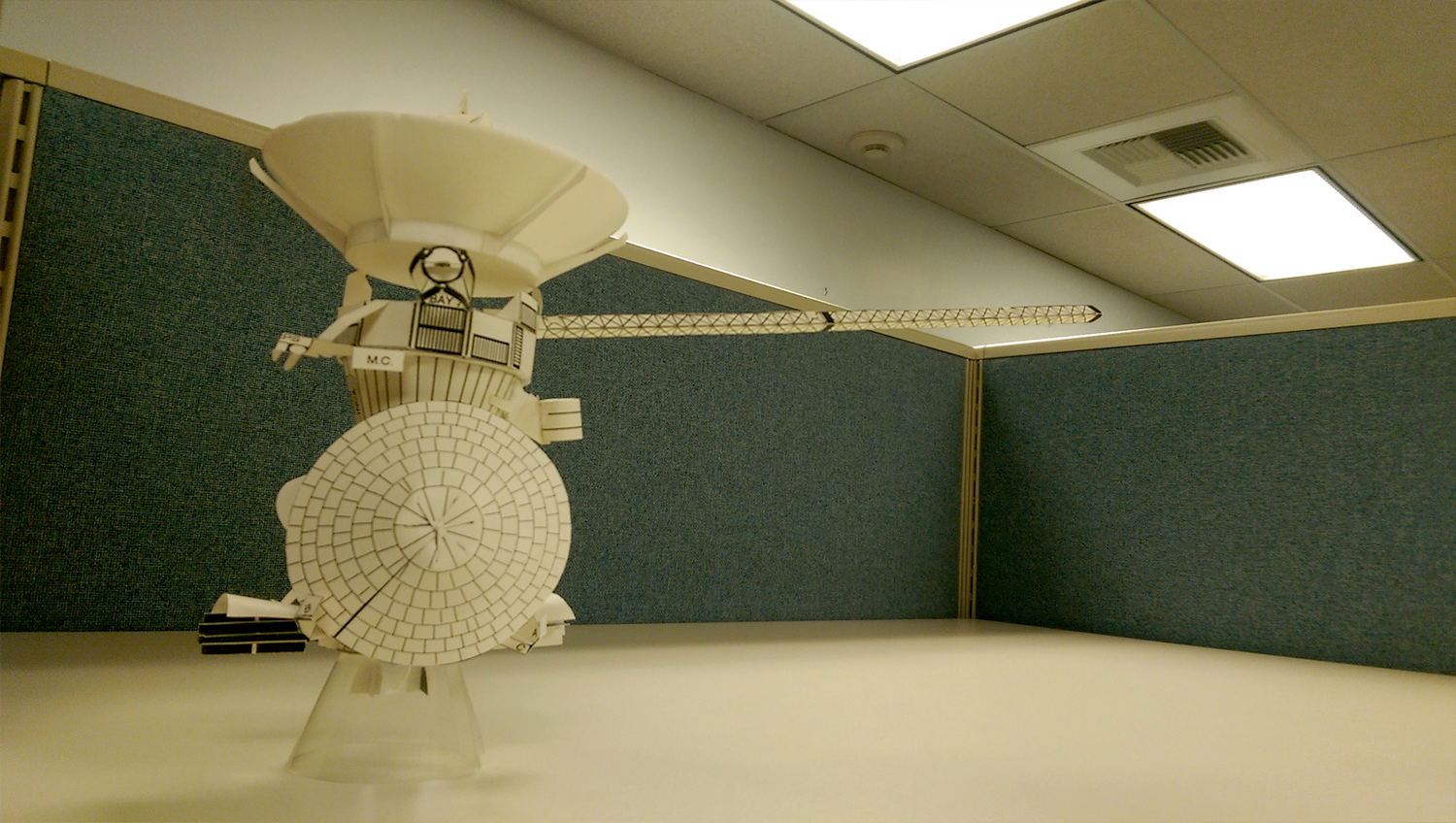
Titan
Saturn’s largest moon, Titan has an earthlike cycle of liquids flowing across its surface. It is the only moon with a thick atmosphere.
Saturn’s largest moon Titan is an extraordinary and exceptional world. Among our solar system’s hundreds of known moons, Titan is the only one with a substantial atmosphere. And of all the places in the solar system, Titan is the only place besides Earth known to have liquids in the form of rivers, lakes and seas on its surface.
Titan is larger than the planet Mercury and is the second largest moon in our solar system. Jupiter's moon Ganymede is just a little bit larger (by about 2 percent). Titan’s atmosphere is made mostly of nitrogen, like Earth’s, but with a surface pressure 50 percent higher than Earth’s.
Titan has clouds, rain, rivers, lakes and seas of liquid hydrocarbons like methane and ethane. The largest seas are hundreds of feet deep and hundreds of miles wide. Beneath Titan’s thick crust of water ice is more liquid—an ocean primarily of water rather than methane. Titan’s subsurface water could be a place to harbor life as we know it, while its surface lakes and seas of liquid hydrocarbons could conceivably harbor life that uses different chemistry than we’re used to—that is, life as we don’t yet know it. Titan could also be a lifeless world.
Did You Know?
As exotic as Titan might sound, in some ways it’s one of the most hospitable worlds in the solar system. Titan’s nitrogen atmosphere is so dense that a human wouldn’t need a pressure suit to walk around on the surface. He or she would, however, need an oxygen mask and protection against the cold—temperatures at Titan’s surface are around minus 290 degrees Fahrenheit (minus 179 Celsius).
Titan’s dense atmosphere, as well as gravity roughly equivalent to Earth’s Moon, mean that a raindrop falling through Titan’s sky would fall more slowly than on Earth. While Earth rain falls at about 20 miles per hour (9.2 meters per second), scientists have calculated that rain on Titan falls at about 3.5 miles per hour (1.6 meters per second), or about six times more slowly than Earth’s rain. Titan’s raindrops can also be pretty large. The maximum diameter of Earth raindrops is about 0.25 inches (6.5 millimeters) while raindrops on Titan can reach diameters of 0.37 inches (9.5 millimeters), or about 50 percent larger than an Earth raindrop.
Pop Culture
Titan was famously featured in the 2009 film “Star Trek”—the U.S.S. Enterprise comes out of warp in Titan’s atmosphere in order to sneak up on the Romulan ship attacking Earth. Titan also appeared in the film “Star Trek Nemesis,” as well as an episode of “Star Trek: The Next Generation.” Several other television shows and films feature Titan, such as the film “Gattaca,” and the shows “Futurama” and “Eureka,” as well as the iconic anime series “Cowboy Bebop.” Dozens of video games also feature Titan, as do several comics from Marvel and DC, among others.
Titan has been a setting or subject in dozens of short stories and novels by giants of science fiction including Arthur C. Clarke, Philip K. Dick, and Isaac Asimov, as well as legendary “Star Trek” actress Nichelle Nichols. Even literary greats such as Kurt Vonnegut have included Titan in their fiction.
More to Explore

Resources
Saturn and Titan Resource Package
Explore this page for a curated collection of resources, including activities that can be done at home, as well as videos, animations, posters, and online interactives.
Learn More








